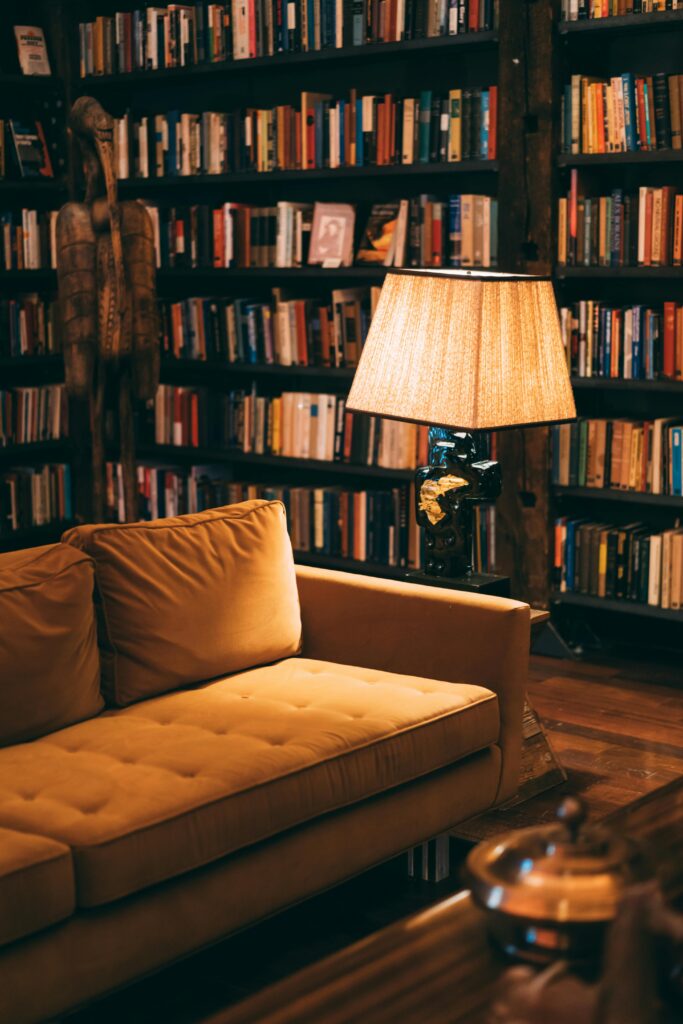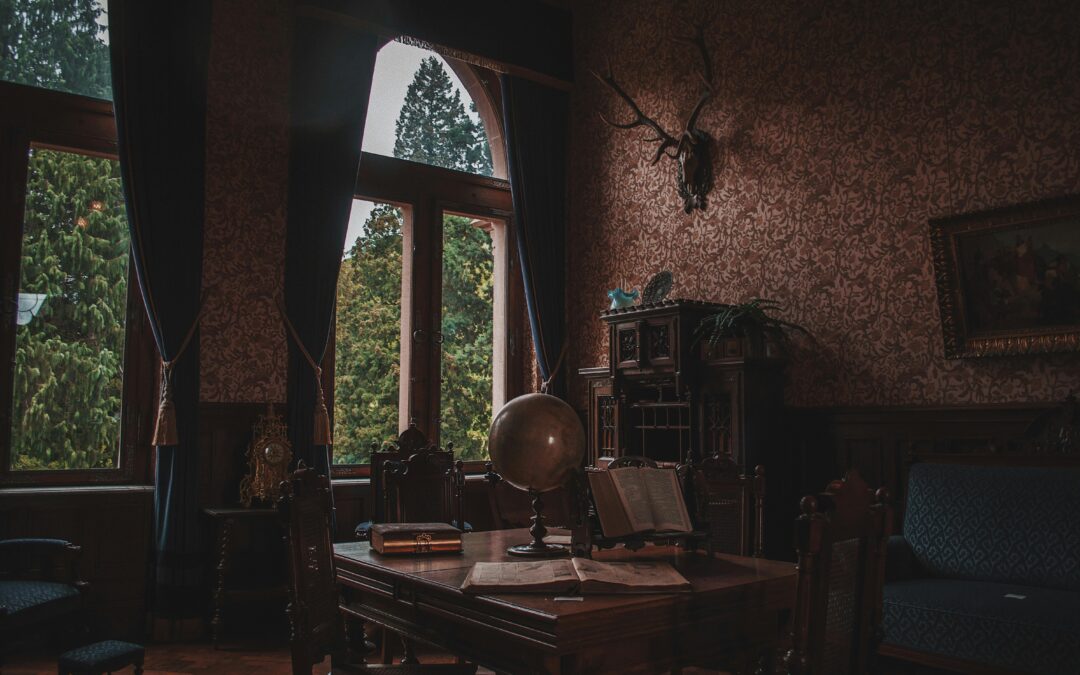Modern rooms don’t have to choose between sleek innovation and the centuries-old charm of Old English. A single heritage detail—think an antique mahogany sideboard or a swath of Tudor-style paneling—can add warmth, texture, and story without tipping a space into museum mode.
Below, you’ll find ten designer-approved, budget-scalable ideas that let you weave “Old English” character into today’s open-plan kitchens, smart-home living rooms, and minimalist lofts. Each tip draws on 2025 trend data, from Pantone’s new brown neutrals to the continued influence of cottagecore and grandmillennial aesthetics, so you can feel confident your update is both timeless and timely.
Why Go Subtle? 
The recent return of “brown furniture” and heirloom finishes reflects a broader shift toward sustainability and individuality in interiors—one that designers expect to strengthen through the decade. Homes & Gardens reports that mahogany pieces now headline vintage fairs after years in the attic, prized for their rich patina and eco-friendly credentials since no new timber is harvested.
Likewise, House Beautiful’s long-range trend forecast notes a continued move away from disposable décor and toward items with provenance and longevity. Choosing a single Old English accent lets you tap that narrative without a floor-to-ceiling overhaul—and it keeps the eye interested in otherwise pared-back rooms.
So why should we aim for subtlety? Because too heavy a touch of Old English goes from classy to moody very quickly! It’s much better to selectively add accents and details to make your home feel a balance of warmth and darker tones.
Ten Subtle Ways to Add Old English Charm
1) Invite Mahogany Back In
A single mahogany sideboard, tilt-top table, or leather-topped desk instantly grounds a white or grey scheme, delivering the depth designers call for in 2025. If you fear dark wood will dominate, balance it with lighter upholstery or sleek metal lighting—contrast was integral to Georgian parlors and still feels fresh. Furniture insiders add that “brown furniture” now sells out fastest when mixed with contemporary art or sculptural lamps.
2) Half-Height Oak Paneling + Wallpaper
Tudor great halls were wrapped floor-to-ceiling in carved oak linenfold; you only need the lower third. Install painted MDF panels capped with a chair rail, then paper above with a soft botanical for an updated nod to 16th-century craft. The National Trust lists oak paneling and velvet hangings as signature Tudor elements—proof that wood texture is historically accurate.
3) Warm Heritage Hues: Pantone’s Mocha Mousse
Pantone crowned PANTONE 17-1230 Mocha Mousse its 2025 Color of the Year, calling the roasted-coffee shade “comforting yet refined.” Designers at JRL Interiors recommend pairing this mellow brown with sculptural off-white plaster or brushed brass for a “library-meets-loft” vibe. Swap it onto lower cabinets or a feature wall to echo the caramel tones of antique timbers without the cost of new furniture.
4) Pattern Play the English Way
Cottagecore continues to popularize unfitted kitchens and vintage floral prints, encouraging pattern layering in even modern apartments. Combine one Jacobean floral with a ticking stripe—an approach championed by the grandmillennial movement that Country Living says is still surging in 2025. Keeping patterns within a shared palette (sage, russet, cream) ensures cohesion while retaining that “collected over generations” look.
5) Library Lighting Layers
Dark-academia décor blogs highlight how pleated library shades, wrought-iron chandeliers, and low-glow sconces create a scholarly cocoon. Planner 5D Layer ambient, task, and accent lighting around one reading corner to borrow that Oxford-commons ambience—no full wood-paneled library required. Homes & Gardens even showcased Keith Richards’ moody library as a blueprint for 2025’s “characterful dark spaces.”
6) Dress Up Hardware in Antique Brass
Kitchen-and-bath experts predict hardware will read like jewelry next year—oversized pulls, petal-shaped knobs, and (crucially) warm metals replacing matte black. Swapping your sleek stainless handles for unlacquered brass or pewter bridges the gap between historic and current without a cabinet refinish.
7) Frame Botanical Prints (or Hunt Scenes) in Gilt
Nothing says Georgian study like a grid of botanicals in slim gilt frames. Cottagecore’s affinity for nature prints makes them widely available and affordable, notes House Beautiful’s primer on the aesthetic. Hang three-by-three above a console or style one oversized lithograph against a mantle for instant heritage.
8) Create a Velvet “Snug”
A curved, jewel-toned velvet loveseat tucked under the stairs or beside a window re-imagines the Victorian “snug”—a small, private sitting nook. Designers interviewed by Homes & Gardens say curved silhouettes and luxe upholstery lead 2025’s furniture trends, largely because they soften linear modern architecture.
9) Re-Home Textiles: Quilts as Wall Art
Vintage quilts are trending as tapestries and headboards, a sustainable alternative to mass-produced art that taps the handcrafted heritage of English country houses. Sustainability-minded decorators see antiques as the ultimate eco choice because they “cut landfill and lock in carbon,” according to design-future analysts. Frame a faded log-cabin quilt behind plexiglass or drape one over a neutral sofa for approachable history.
10) Hide Tech Behind Traditional Millwork
Even heritage manors stream Netflix—just quietly. Veranda’s recent Newport Beach house tour showcased a botanical collage that slides to conceal a television, proving you can integrate screens without sacrificing period charm. Consider a frame-style TV recessed into wainscoting or speaker grilles camouflaged by cane inserts; the hardware swaps in Tip #6 to complete the disguise.
Ready to Weave in Some Old-English Details?
Start with one tactic—a mahogany console, a brass-knob swap, or a cozy velvet nook—then layer slowly so each piece feels earned, not staged. If you’d like help curating antiques or commissioning custom paneling, explore Centerline Design’s Interior Design services for guidance. For more inspiration on bringing heritage and modernity together, see our post on Design Trends You Need to Know. Together, we’ll craft rooms that feel both timeless and unmistakably yours.
